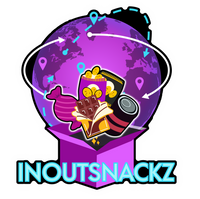From Side Hustle to Snack Icon
Scroll through TikTok or YouTube Shorts, and you’re bound to find someone unboxing an $80 Japanese candy haul or reacting to their first bite of a super sour Korean gummy. These videos rack up millions of views — and even more purchases.
Today, content creators aren’t just promoting snacks — they’re driving demand, creating microtrends, and even determining what lands on store shelves.
At InOutSnackz, we’ve seen firsthand how a single viral video can turn a quiet product into a same-day sellout.
The Era of the Snackfluencer
“Snackfluencer” may sound silly, but it’s serious business. These creators:
- Try weird, imported, or nostalgic snacks
- Deliver honest, energetic reactions
- Pair the product with a specific vibe, meme, or aesthetic
- Link directly to stores like InOutSnackz for purchasing
And it works — especially with Gen Z and millennials, who trust influencer recommendations more than traditional advertising.
Snackfluencers often spark mini-trends that cause spikes in Google searches, Reddit threads, and store sales. A few seconds of ASMR-style crunching or neon-coloured gummies getting poured into a bowl can create massive FOMO.
Who’s Watching (and Buying)?
The audience is global, but the trends tend to start in:
- North America — where imported snacks are still seen as unique or nostalgic
- Southeast Asia — with creators showcasing U.S. candies and cereals
- Europe — where Asian drinks and spicy noodles create curiosity-driven content
In Canada, we’re in a unique sweet spot. Creators with even modest followings can go viral by reviewing rare finds like:
- Popping Candy Milk Chews
- Lychee Gummy Rings
- Mystery-flavour Bubble Tea Kits
The rarer the item, the higher the viewer interest.
Why It Works: A Recipe of Engagement and Cravings
Snackfluencer content taps into multiple consumer emotions:
- Nostalgia: “This tastes like my childhood in the Philippines!”
- Adventure: “I have no idea what this is — let’s try it.”
- Connection: “She had the exact same reaction I did to that sour candy!”
- Urgency: “It’s a limited-time item? Say less.”
The content is short, immersive, and often humorous — all traits that align perfectly with snack marketing.
Retailers Take Note: Content Drives Cart Adds
Brands and stores like InOutSnackz are learning to work with creators rather than just advertising at audiences. Some best practices include:
- Sending PR snack bundles to micro-influencers
- Creating branded hashtags like #InOutTasteTest
- Collaborating on mystery box unboxings
- Building creator-curated snack collections (e.g., "Jessica's Top 5 Kawaii Snacks")
Even without paid partnerships, UGC (user-generated content) can become a powerful marketing asset.
Not Just Hype — Real Results
At InOutSnackz, we’ve had products sell out within 48 hours after an influencer posted a haul. Some of our best-performing viral items were:
- Filipino Cheese Rings that turned into meme content
- Japanese Fish-Shaped Cookies that shocked people with their filling
- Indonesian Spicy Chips that led to challenge-style content
None of these were planned in advance — they were discovered, enjoyed, and amplified by passionate snackfluencers who love sharing their finds.
Final Crunch: Influencers Are the New Snack Sherpas
Gone are the days when a big ad in a grocery flyer could launch a snack. Now, a teen with a ring light and a genuine reaction can spark thousands of orders.
For retailers, the takeaway is clear: if you want to grow, don’t just stock the snacks — connect with the creators who will turn them into must-haves.
Want to become part of the movement? Tag your hauls with #InOutSnackz — we just might feature you in our next campaign.

